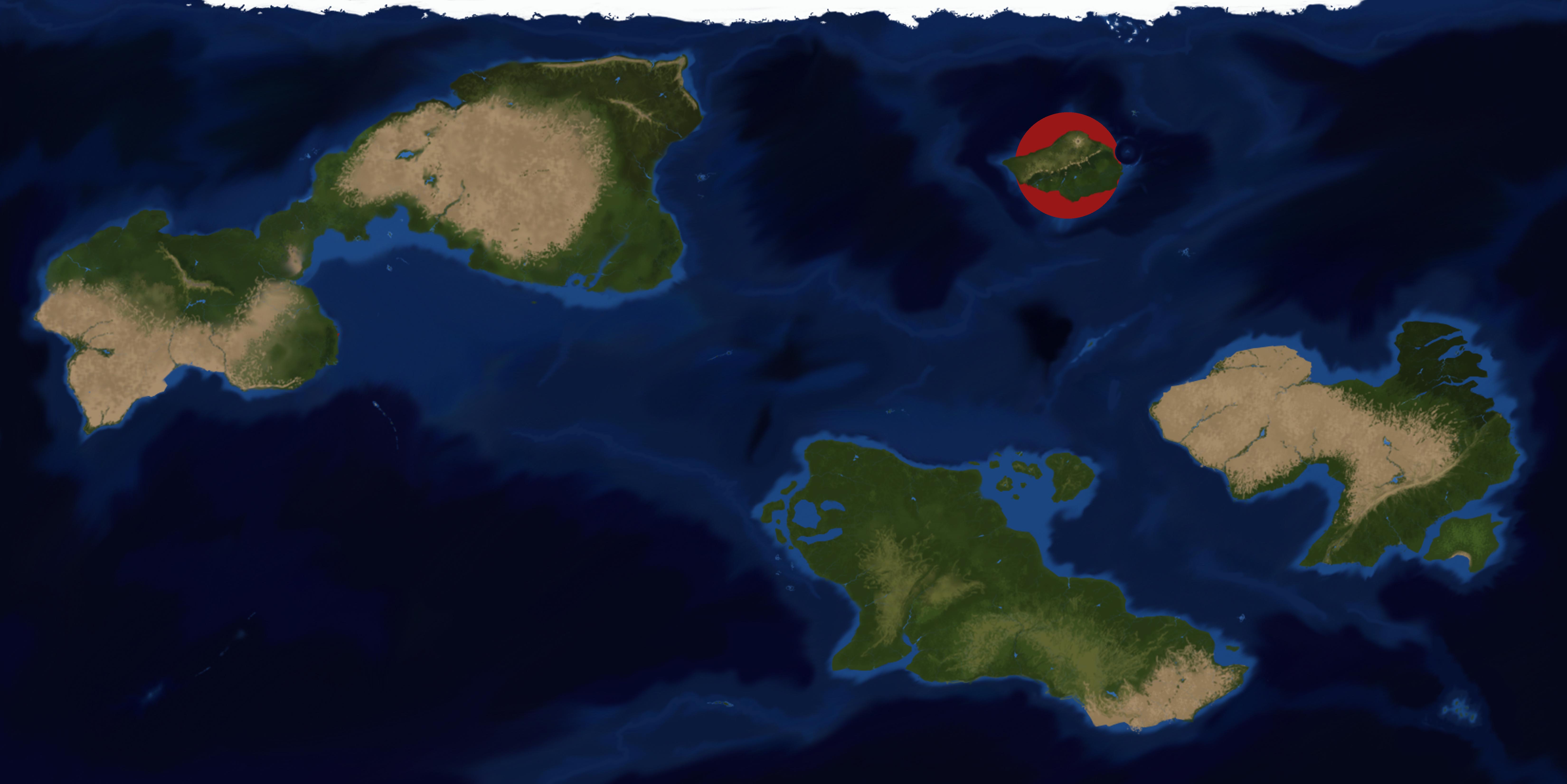Common Ching-Tao
Cephalobarbus aculeus is one of the only surviving genera of the Pseudocephalocaudata, a once thriving family of amphibians that inhabited the pelagic environments of the Gleann Blathànna seas.
Once sought after by many fishermen as a trophy of their accomplishements, the fishing of this species has now been declared illegal by many local authorities and transgressions are punished with a hefty fine and the immediate termination of any maritime activity permit the offender had in its posession.
It was first described as the “Taurian shark” (Lake, 2456) due to the similiar shape of the two creatures.
The common name Maori Ching-tao derives from the black stripes that are found all throughout the amphibian’s body, which are reminescent of modern Maori tatoos.
Like its cousin, the Blackfin Yung Zao (Carcharobelua Sp.), C. aculeus was first collocated in the newly named Pseudocephalocaudata by marine biologist Edward Lake in the year 2459.
Basic Information
Anatomy
- Rostrum frontally elongated; cranial armor thin; two pairs of fleshy barbs grow from the ventral zone of the dentary.
- Natal aculeus retained to adulthood.
- The first dorsal fin extends caudally to the beginning of the Gill tail; second dorsal fin is spear shaped and projects caudally outside.
- Anal I in shape similar to ceratotrichian fins in earth sharks; Anal II single and elongated, projecting caudo-ventrally from the body.
- Gill tail very short and stubby; Gill fan large with very low ridges and soft caudal drop.
Genetics and Reproduction
Polyginous species.
The Cephalobarbus aculeus goes into heat three times a year.
Females o the species will migrate into the male territories all together in a single big school.
every territory they pass by, they'll lose some females, who will stop by to mate with the local male, while the rest of the females move on on their migratory journey to the farthest male they find.
Males advertise their presence in a territory by making complex "sand castles" around the edges of their territories, inviting in the females; They'll use their Anal II fin to draw figures on the sand, creating symmetrical patterns; the more complex the pattern, the more appealing the male will be to the passing females, meaining that more females will stop by in his territories.
A male will always mate with every female that stops by him.
Mating takes up to ten minutes per partner and a single female will lay one egg each.
Once fertilized a female will return straight away to its own territories, where she'll harbor the egg in the duct for around three days before laying it in an area of the sandy bottom she appositely prepared for the occasion.
The egg will take around thirty days to hatch and the spawn will soon find shelter by the parent.
The mother will nurse the spawn for the first three months, helping it increase in body mass until independent.
The offspring will then voluntarely leave the nest and go make its own territory.
Growth Rate & Stages
A baby of the species will be almost completely developed at birth and will mostly need to increase in body mass.
Ecology and Habitats
They are epipelagic animals from the neritic zone.
they can be found from 20 to 50 m deep in sandy underwater plains and seagrass prairies.
Dietary Needs and Habits
A very active predator, Cephalobarbus aculeus will patrol its own territories several times a day looking for food.
Biological Cycle
From birth to adulthood very few ontogenic changes can be seen, most visibly the growth of the barbs and the changing o the snout from a more rounded to a more shark like silhouette.
Sexual maturity comes at three years of age and sexual sterility will come very late in life for both sexes, in males at twentysix and in females at age thirty.
This particular species doesn't lose the natal aculeus.
Additional Information
Social Structure
Territorial animals.
They don't tolerate conspecifics outside of mating season and the offspring while they nurture it.
Uses, Products & Exploitation
Once game fish for many avid fishermen, now a protected species.
This species is protected under Gleann Blathànna maritime and ethical fishing jurisdiction and transgressors are punished with hefty fines and the requisition of maritime activity permits for six months to a year.
Geographic Origin and Distribution
Perception and Sensory Capabilities
Sight and Echolocation are this animal's main ways of navigating its surroundings.
Symbiotic and Parasitic organisms
In a symbiotic relationship with different species of smaller amphibians that keep them clean in exchange for their scraps.
Can be effected by Intestinal Tube Worms.
Scientific Name
Eoichthyia; Tartarosomnia; Rotunducephalidae; Gladiopinnoidea; Paragladioidea; Caudocephalidae ; Pseudocephalocaudatinae; Cephalobarbus; C. aculeus
Lifespan
30 years male, 35 years female
Conservation Status
ENDANGERED: This species is now protected under strict laws on its fishing.
Population trend: RECOVERING
Average Weight
10 to 30 kg
Body Tint, Colouring and Marking
Azure body with sandy colored countershading.
Black markings on the dorsal area and on fins, unique for any specimen.
Terminal section of the barbs yellow-orange.
Remove these ads. Join the Worldbuilders Guild












Comments